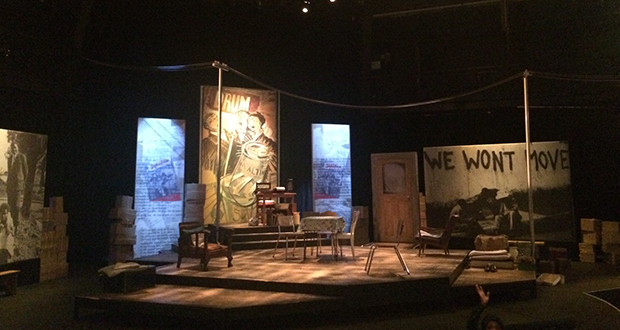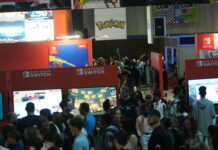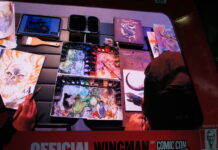After attending the National Arts Festival in Grahamstown, MALEBO GOLOLO needs to get something off her chest about the state of the arts in South Africa.
It’s been a few weeks after the Grahamstown National Arts Festival and a week after the 969 Festival which showcases pieces shown at the National Arts Festival. Artists are also getting ready for the Cape Town Fringe festival which takes place in late September. With all these spectacular art events taking place, I find myself with a lump in my throat and something sitting heavily on my chest that I desperately need to lay off. I do however suspect that my vent will be based on my own personal observation and minor speculation with no scientific research to back me up. But if you are an art lover and supporter in its broadest sense, you know that what matters most about art is the experience that it leaves you with, and so my speculations and observations are valid in that sense.
The Grahamstown National Arts Festival is South Africa’s biggest art festival which showcases drama, dance, music, visual art exhibition, workshops, tours, film, theatre, crafts, jazz, comedy, opera, markets and happy people. I had a conversation with a stranger I met at the festival which left me with all sorts of mixed feelings. In the conversation, he alludes that the 11 days of the festival were bigger and better, and I assume that he meant to as opposed to previous years. Although I disagree with his position, I can’t ignore the fact that it all depends from which spectrum you viewed the festival. As a guest of the sponsors and carefully selected tickets, you might have been led to believe that it was a bigger and better event. Here is where I agree with him; that art as it is, is heavily being taken for granted by the state and, to a certain extent, by society.
The inequalities and segregation weigh painfully on the eye. I guess everywhere you will go in South Africa, you will be confronted with a direct mirror on the realities of our society. It is especially evident when one is attending a show at the high-end Centenary and in the same breath attending another at the Recreation Hall in the nearby township. This is when the realities of the overt inequality slap you in the face as if you are not used to it already. It is reality – no matter how many times you live through it, you can’t reconcile the injustices in your head. Although the festival has a history of creating platforms for protest and political theatre at the height of apartheid tensions, I cannot ignore how deeply seeped into colonial history the town is because each and every day, the 1820 Settlers National Monument established in 1974 reminds us of this. But this is our country and we cannot avoid spaces where we ought to claim for ourselves and so we need to take advantages of festivals like this one.
I have written before on the importance of art in our society and the role it played in our liberation struggle. In a conversation with colleagues on supporting local art, one of them with confidence asserted that black people do not have a culture of supporting art and thus we should learn and in turn, we will see more art being supported. I am not sure I buy that. Art has always been a part of our history as black people. It is interesting to note that many vehicles of art that survived the apartheid struggle have since disappeared in the dawn of democracy. This is telling and must be interrogated. Without fail, artists support one another simply because of the value they put on their craft. But is that enough?
The way Grahamstown National Arts Festival is set up is that you have main events which always have spots in the best venues and then you have fringe shows made up of up-and-coming artists. Because main shows are events I usually catch when I am at home and are almost always sold out, I make it a point to support fringe shows. It is always heartbreaking when for the duration of the festival a really awesome production will garner an audience size of about five to fifteen. It must really be hard on the artist’s spirit to have that happen to them. Chatting to a few of the performing artists and the locals, they mostly agree with my sentiments that the festival; unfortunately, is no longer the same. It is simply not buzzing like it used to. After 6pm it is dead quiet and the festival hop on hop off service (Festival Hoppers) are no longer loyal, making you wait over an hour and increasing the chance of missing your next show if you have a back-to-back schedule.
I am sorry if this sounds pessimistic but I am simply outlining my experience. Yes, loads of fun was had and a bucketload of pictures were taken, as Instagram is my witness, but there are dangers of a single story and so I feel compelled to tell this side of the story. I watched anything from four to five fringe shows a day and one main show towards the end of my stay. One particular fringe production that I have been following is Milked Voice, written and directed by Slindile Mthembu, a Musical Theatre BTech graduate from Tshwane University of technology. When I saw her piece for the first time, I marvelled at her use of a live band and different character monologue rendition to tell a story of an artist. It highlights how art is no longer the same and how artists seem to “filter and file away their dreams in boxes” that they carry. This highlights a serious issue that artists are facing of having their crafts relegated and dismissed as a soft skill.
In Grahamstown, Milked Voice gave an astounding performance, getting media opportunities and a smashing review in the daily student publication Cue – the reviewer perfectly captures the production as a “music of dreams”. The production not only speaks to artists but to individuals alike as you sit and start reflecting on your own life. It is no surprise that the production scooped a Standard Bank Ovation Merit award. Beyond the production, Slindile asserts that the project is all about pioneering, empowering and breaking through gender spaces in the playwright and directorship spaces in art.
And so like my stranger friend, I agree that the state is missing a great investment opportunity in art. It would also help if we all came to terms with the fact that more and more black individuals are choosing art as a vocation. It is not unfamiliar to hear parents lamenting when their children choose to study art. This in an indication that we all know how hard it is for an artist to navigate their daily lives in an environment that is not conducive for them. Milked Voice captures this so efficiently.
It is important to reflect on the role that art has played in our society and how it continues to play to keep us sane each and every day. It is important to reflect on how art can play a bigger role in healing this nation because we are truly in need of healing.










